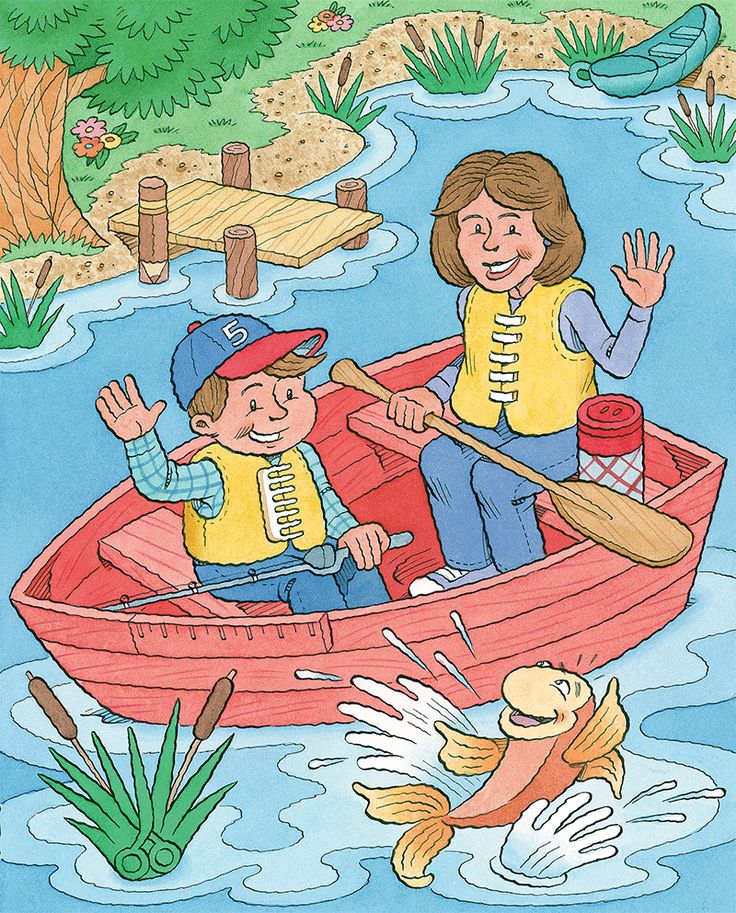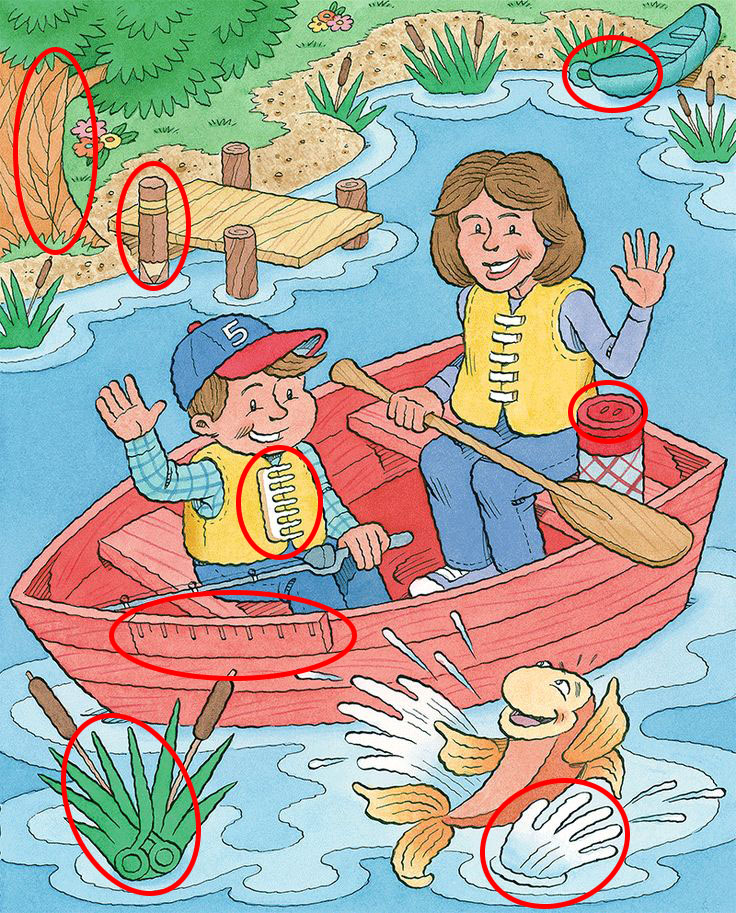Hidden object puzzles have always fascinated both kids and adults. They test your patience, sharpen your observation skills, and give you that little spark of excitement once you finally spot the item you’ve been searching for. Today, we’ve got a colorful riverside scene where two people are enjoying a day on a boat, but hidden around them are eight cleverly disguised objects. Your mission is simple: find the glove, scissors, ruler, comb, button, pencil, feather, and teacup.

At first glance, it may look like a cheerful cartoon picture of a mom, her son, and a happy fish splashing in the water. But take a closer look—this innocent illustration hides everyday objects tucked into places you wouldn’t expect. Ready to test yourself? Let’s dive in.
Why Are Hidden Object Puzzles So Tricky?
Before we begin, let’s talk about why puzzles like these stump so many people. Often, it’s because:
- Our brain looks for patterns it already knows. When you think of a glove, you imagine it sitting on a table or being worn. You don’t expect it to become part of a fish’s splash.
- Colors and shapes play tricks on us. Artists intentionally blend the hidden object into similar backgrounds so you miss it at first glance.
- We rush. Many people give up too soon or only scan the obvious areas, forgetting that the most devious spots are often right in front of you.
Sound familiar? Don’t worry—it happens to everyone. Now let’s go step by step and uncover the hidden objects together.
Video : Hidden Pictures Puzzle #1 | 2020 | Can You Find All The Objects? | Highlights Kids
Step-by-Step Guide to Solving the Puzzle
1. The Glove
Start at the bottom of the image where the cheerful fish is leaping out of the water. Notice the splashes? One of them looks unusual—it actually forms the clear outline of a white glove. The artist has cleverly disguised it as part of the water spray.
2. The Scissors
Next, glance to the left corner of the water. Hidden among the green reeds is a pair of scissors. The blades blend seamlessly with the pointed grass, and the circular handles are disguised as extra leaves. At first, your eyes assume it’s just part of the plant, but once you spot it, you can’t unsee it.
3. The Ruler
Now focus on the boat itself. Along the inside edge of the red boat, just beneath the boy, lies a ruler. The straight lines match perfectly with the wooden planks, making it nearly invisible unless you compare the markings to the rest of the boat’s texture.
4. The Comb
Look closely at the boy’s yellow life vest. What seems to be the fastening down the center isn’t just a zipper—it’s a cleverly disguised comb. Its teeth match the design so perfectly that you might not question it until you look carefully.

5. The Button
Shift your attention to the woman in the boat. Near her hand holding the oar, there’s a red circle that appears to be part of the picnic basket or a detail on the boat. But look again—that’s actually a button tucked into the design.
6. The Pencil
Now glance at the wooden dock in the background. One of the upright posts looks slightly different from the others. That’s because it’s not just wood—it’s a pencil, cleverly hidden among the natural textures of the riverbank.
7. The Feather
On the far left, near the edge of the riverbank, a tree trunk hides something unexpected. Look at the vertical lines of the bark, and you’ll see one section shaped like a long feather. Its texture mimics the tree, but its shape gives it away once you notice it.
8. The Teacup
Finally, head to the upper right corner of the picture. Among the large green leaves floating on the water, one has a suspiciously round shape at its tip. Look closer—it’s a small teacup nestled inside the leaf’s curve, almost camouflaged against the water and plant.

Common Mistakes People Make
When solving puzzles like this, readers often:
- Overlook the obvious. The glove is large, yet many people dismiss it as just splashing water.
- Ignore symmetry. The scissors hide by blending with symmetrical grass blades, which makes them easy to miss.
- Fail to zoom in. Many skip small details, like the button or the pencil, assuming they’re part of the illustration’s background.
The key takeaway? Always slow down and question details that don’t quite fit.
Why These Puzzles Help Train Your Brain
It’s not just fun—these puzzles are mini workouts for your mind. They:
- Improve attention to detail by forcing you to notice subtle differences.
- Strengthen patience and focus, since rushing rarely works.
- Spark creative problem solving, as you learn to see objects in new contexts.
Video : Hidden Object Game – OPTICAL ILLUSION PUZZLE | Emoji Quiz 🔎
Think of it like mental yoga—stretching your brain in ways you don’t normally use it.
Final Thoughts
Now it’s your turn: Did you find them all on your own before reading the guide? Which one tricked you the longest—the glove or the teacup? Share your experience in the comments below. And if you enjoyed this puzzle, don’t stop here. Try more hidden object challenges to sharpen your observation skills and keep your brain active. After all, every puzzle is a chance to see the world with fresh eyes.